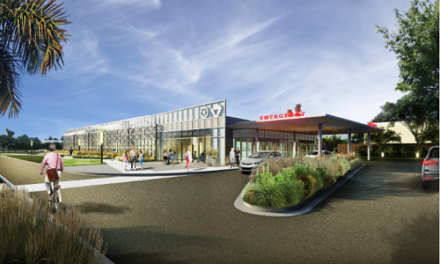By Scott Rice, MD, PhD, MBA, MS, and Richard Grosso
The 2022 Medicare Physician Fee Schedule Final Rule announced substantial payment increases for Medicare Chronic Care Management (CCM), even though most other services will receive about 4% less than in 2021. The increases incentivize greater participation in CCM with reimbursement for the minimal billable CCM services, at least 20 minutes of telephone contact (CPT 99490), jumping on average from $42.17 to $62.16, a 51% increase! At this new reimbursement, a practice enrolling 300 eligible Medicare patients has the potential to gross over $225,000 in yearly CCM revenue. Creating such a profitable new revenue stream helps offset the negative financial effects of disruption and payment reductions that are contributing to physician loss of satisfaction and burnout.

Historically, the ACA in 2010 mandated care coordination and disease management services be delivered to Medicare and Medicaid patients having 2 or more chronic medical conditions. In response, CMS launched Medicare CCM in January 2015 as a telephonic program for enhancing health and care for this targeted, vulnerable patient population which utilizes the vast majority (>90%) of Medicare funds. This critical primary care component of health care transformation has been shown to lower total costs of care and improve patient outcomes; it is one of the top CMS innovations meeting the Quadruple Aim framework that guides continuous improvement in health care delivery.
Why this payment incentive?
From the start, Medicare has fully intended for as many eligible beneficiaries as possible to be enrolled in CCM in order to meaningfully improve the health of the high-utilizer population, and as a result, help sustain Medicare. However, there has been surprisingly slow adoption, low patient enrollment, and an unexpected refractoriness to participating in CCM, even though this primary care-focused program improves care management, creates a financial opportunity, and prepares participants for value-based payments! A survey in 2015 revealed much of the challenge to advancing CCM is due to a lack of physician awareness of the program’s benefits and a general perception that Medicare reimbursements for these services are too low.
Why a Next Gen CCM program?
By performing an ROI/gap analysis, most medical practices find they lack the resources and capabilities required to implement a profitable, high value CCM program. However, a solution for these practices is to outsource CCM services. Unfortunately, some earlier CCM companies viewed the program as merely a financial offering, failing to recognize the importance of CCM to health care transformation. To reconcile this disparity, Your Doctor In Touch (YDIT) developed a novel, innovative Next Generation (Next Gen) CCM program adherent to Medicare’s vision for CCM.

How does YDIT’s Next Gen CCM advance the program?
Next Gen CCM strategies that advance Medicare CCM include:
1) Alignment and care coordination: These processes involving all providers and the patient are essential to the successful delivery of Next Gen CCM and they are initiated ASAP following patient enrollment.
2) Precision and personalization: Patient-centricity and meeting patients where they’re at by asking patients “What matters?” rather than “What’s the matter?” and leveraging shared decision-making to engage patients in their care.
3) Whole-person health: Management and coordination of all aspects of care and bridging identified gaps in care ensures holistic medicine.
4) Patient safety and risk management: Vigilant care managers routinely review determinants of health to assess each patient’s health risks and regularly evaluate at-home safety and risk of harm, from medications to falls.
5) Early detection and reporting of patient deterioration: To improve patient outcomes and reduce Medicare waste, ongoing surveillance for patient deterioration is performed, and once detected, an alert is immediately sent to the supervising physician with the intention of circumventing an avoidable ED visit or hospitalization.
6) Enhance patient experience of care: Increasing patient satisfaction resulting from the above strategies will improve CAHPS scores.
7) High-value care: Electronical clinical quality measures (eCQM) to be submitted for Medicare incentive payments are monitored and managed. The completion of reportable measures is regularly assessed, coordinated, and documented in the EHR for each physician by CCM staff. This value-added feature keeps physicians updated on which measures remain to be performed and is available to all medical practices and health care systems participating in the Medicare Quality Payment Program. For independent practices that are not part of a larger organization, Next Gen CCM will compile and file reports and attain Medicare rate enhancements for them as they would receive, for example, as an ACO member. Thus, Next-Gen CCM increases physician income through dual Medicare payments — direct reimbursement for CCM services plus a positive performance payment adjustment.
In summary, the additional benefits of Next Gen CCM advance the Quadruple Aim, making CCM worth re-assessing as a service that enhances patient satisfaction, conserves Medicare dollars, helps primary care practices increase revenue, and most importantly, improves the lives of the patients who entrust their care to us every day.
For more information, contact Richard Grosso at (561) 861-5141 or Richard.g@ynit.us.



























